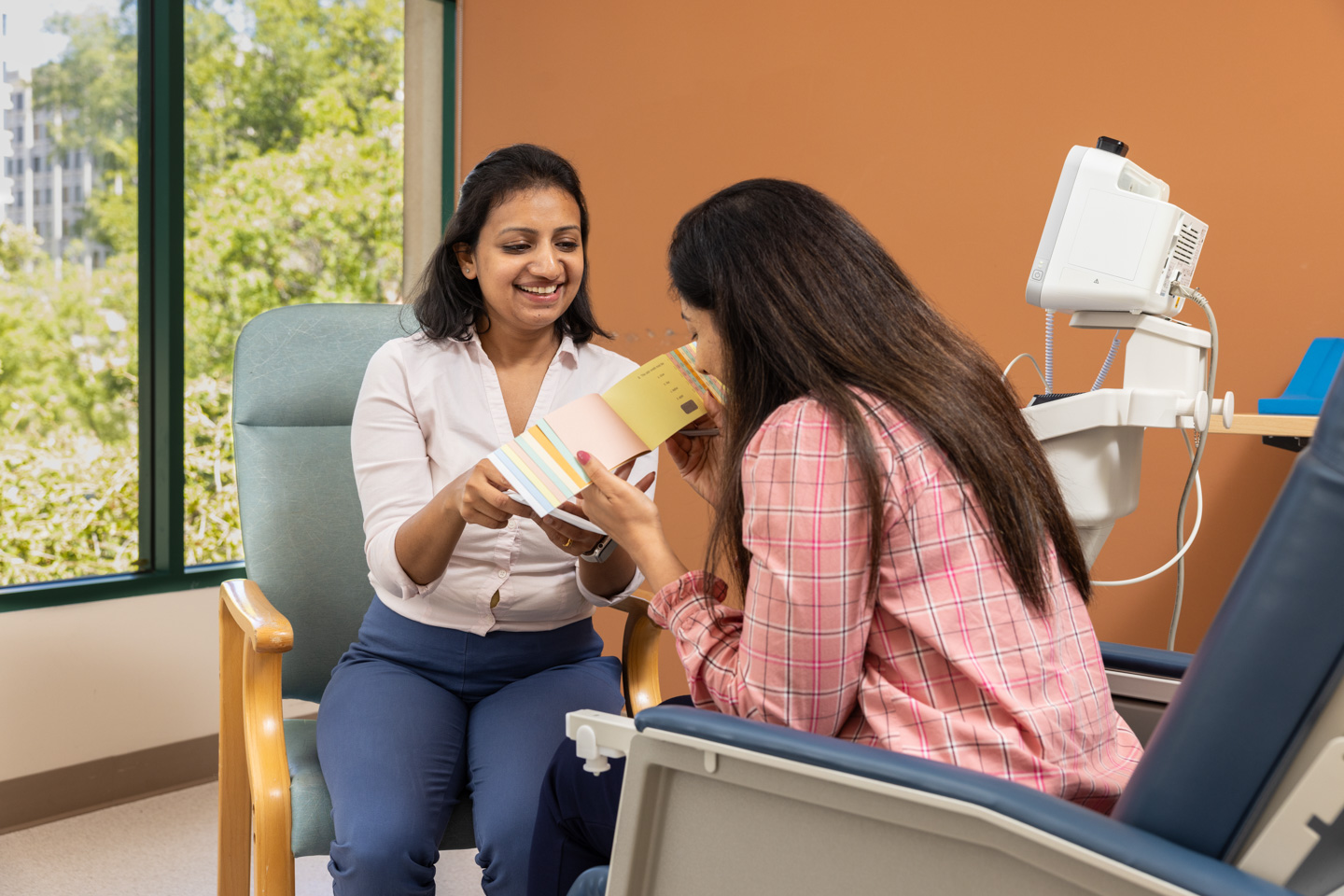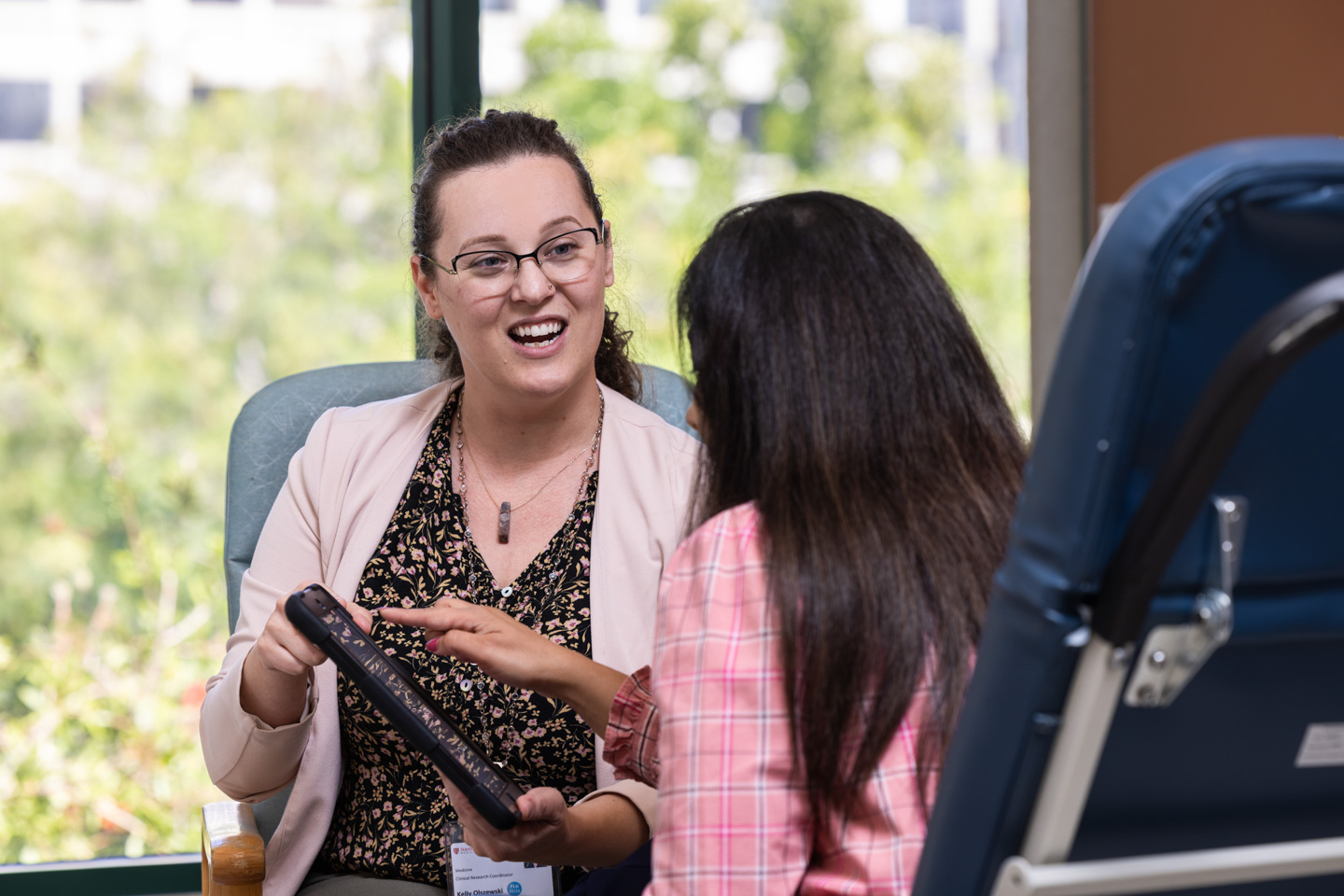
SCCR’s Quality and Compliance Team Shows Resilience Amid Pandemic Pivots

SCCR’s Quality and Compliance Team Shows Resilience Amid Pandemic Pivots
When COVID-19 hit in 2020, it dramatically disrupted ongoing clinical research, as well as quality and compliance monitoring.
The Quality and Compliance team at the Stanford Center for Clinical Research (SCCR) faced the challenges head-on, pivoting and pivoting again as the situation on the ground shifted. By the time the brunt of the pandemic ended, the Department of Medicine had a larger clinical research portfolio than ever — from $125.7 million in sponsored research in 2019 to $164 million in 2022, and quality and compliance monitoring had entered a new era.
Essential Trials Go Virtual
When COVID hit, the university paused nonessential research, a category that included observational clinical trials unrelated to COVID.
The majority of studies that SCCR participates in are interventional, however, and remained active. At the same time, many new studies that were focused on understanding and treating COVID launched across the department. The SCCR Quality and Compliance team quickly learned how to operate in the new virtual paradigm.
Study monitoring that had been done on-site went remote. Teams moved to use electronic consent forms that participants could sign remotely or on encrypted iPads with plastic covers that could be cleaned after each use. If paper consent forms had to be used, staff took photos of the signature pages for study records. They then quarantined the paper forms for 10 days in sealed bags before removing and filing. Checklists became an essential tool to ensure that study conduct remained as methodical and precise in the new, shifting paradigm as it was prior to COVID.
Restarting Research and Refreshing Protocols
When it was time to resume paused studies, study teams received refreshers on the study protocol, consenting processes, and data entry.
Some studies resumed before pandemic restrictions had entirely lifted. One such study was the Project Baseline study — a large, multiyear observational study that aims to map human health. The project was paused for seven months and then resumed with virtual operations.
The study team worked with the research sponsor to build systems to conduct virtual study visits and temporarily waive on-site assessments. They often met with participants over video to help them through study processes that would typically be done face-to-face.
Kelly Olszewski, clinical research coordinator, explains the RECOVER study process.
In February 2021, as vaccines became available, Project Baseline was able to resume some onsite visits for assessments such as specimen collection, vital signs, and EKGs.
The study team’s resilience in the face of multiple hurdles kept the research project alive against the odds. “Retention for this seminal, longitudinal Team Science study remains high (88%) as we approach the end of the study,” says Sumana Shashidhar, SCCR’s associate director of clinical research operations. (Read about Shashidhar’s work with a Johnson & Johnson vaccine study in this Stanford Daily Q&A.)
Yasmin Jazayeri, clinical research coordinator, gathers data for the RECOVER study
When COVID-19 hit in 2020, it dramatically disrupted ongoing clinical research, as well as quality and compliance monitoring.
The Quality and Compliance team at the Stanford Center for Clinical Research (SCCR) faced the challenges head-on, pivoting and pivoting again as the situation on the ground shifted. By the time the brunt of the pandemic ended, the Department of Medicine had a larger clinical research portfolio than ever — from $125.7 million in sponsored research in 2019 to $164 million in 2022, and quality and compliance monitoring had entered a new era.
Essential Trials Go Virtual
When COVID hit, the university paused nonessential research, a category that included observational clinical trials unrelated to COVID.
The majority of studies that SCCR participates in are interventional, however, and remained active. At the same time, many new studies that were focused on understanding and treating COVID launched across the department. The SCCR Quality and Compliance team quickly learned how to operate in the new virtual paradigm.
Study monitoring that had been done on-site went remote. Teams moved to use electronic consent forms that participants could sign remotely or on encrypted iPads with plastic covers that could be cleaned after each use. If paper consent forms had to be used, staff took photos of the signature pages for study records. They then quarantined the paper forms for 10 days in sealed bags before removing and filing. Checklists became an essential tool to ensure that study conduct remained as methodical and precise in the new, shifting paradigm as it was prior to COVID.

Kelly Olszewski, clinical research coordinator, explains the RECOVER study process.
Restarting Research and Refreshing Protocols
When it was time to resume paused studies, study teams received refreshers on the study protocol, consenting processes, and data entry.
Some studies resumed before pandemic restrictions had entirely lifted. One such study was the Project Baseline study — a large, multiyear observational study that aims to map human health. The project was paused for seven months and then resumed with virtual operations.
The study team worked with the research sponsor to build systems to conduct virtual study visits and temporarily waive on-site assessments. They often met with participants over video to help them through study processes that would typically be done face-to-face.
In February 2021, as vaccines became available, Project Baseline was able to resume some onsite visits for assessments such as specimen collection, vital signs, and EKGs.
The study team’s resilience in the face of multiple hurdles kept the research project alive against the odds. “Retention for this seminal, longitudinal Team Science study remains high (88%) as we approach the end of the study,” says Sumana Shashidhar, SCCR’s associate director of clinical research operations. (Read about Shashidhar’s work with a Johnson & Johnson vaccine study in this Stanford Daily Q&A.)

We learned a lot during the pandemic about how we can simplify research conduct and maintain high scientific rigor, quality, and compliance.
— Ken Mahaffey, MD, SCCR director and department vice chair of research

Yasmin Jazayeri, clinical research coordinator, gathers data for the RECOVER study.
COVID-19 Leaves an Electronic Legacy…
As pandemic restrictions lift, some of the quality and compliance processes created in response to the COVID lockdown have become standard practice. For example, it’s increasingly common to gather participant consent forms electronically and to keep trial documentation in electronic trial master files instead of binders.
“We learned a lot during the pandemic about how we can simplify research conduct and maintain high scientific rigor, quality, and compliance,” says SCCR director and department vice chair of research Ken Mahaffey, MD. “I am incredibly proud of the work that the SCCR Quality and Compliance team has done.”
…and a Clinical Research Legacy
As teams across the department launched COVID-19 studies, SCCR’s regulatory team partnered with investigators to swiftly submit Investigational New Drug (IND) applications to the FDA.
“We launched nearly 20 COVID-19 projects seemingly overnight,” says Toni Nunes, SCCR’s director of operations and strategy.
In 2020, for example, SCCR participated in the Ensemble trial of the Janssen COVID-19 vaccine, enrolling 205 participants in two months. SCCR also operationalized the RECOVER study at Stanford, a National Institutes of Health–funded initiative to study the long-term effects of COVID.
Though COVID threw a logistical curveball at researchers and quality and compliance monitors alike, the pandemic ultimately contributed to growth in clinical research across the department, bringing in organizations and faculty members who had never done research before and now were doing research on COVID and beyond.
A prime example is Stanford Health Care Tri-Valley Hospital (SHC Tri-Valley). In 2020, SHC Tri-Valley hospitalists participated in a trial of treatments for people hospitalized with COVID, with support from SCCR. A series of COVID studies based at SHC Tri-Valley followed, including TRACK COVID, a public health surveillance study. In 2022, SHC Tri-Valley became a site for the Medtronic Ellipsys Vascular Access System Post Market Surveillance Study. The trial evaluates the safety and effectiveness of the Ellipsys Vascular Access System, a device used to create vascular access for hemodialysis — and has nothing to do with COVID.

We learned a lot during the pandemic about how we can simplify research conduct and maintain high scientific rigor, quality, and compliance.
— Ken Mahaffey, MD, SCCR director and department vice chair of research
COVID-19 Leaves an Electronic Legacy…
As pandemic restrictions lift, some of the quality and compliance processes created in response to the COVID lockdown have become standard practice. For example, it’s increasingly common to gather participant consent forms electronically and to keep trial documentation in electronic trial master files instead of binders.
“We learned a lot during the pandemic about how we can simplify research conduct and maintain high scientific rigor, quality, and compliance,” says SCCR director and department vice chair of research Ken Mahaffey, MD. “I am incredibly proud of the work that the SCCR Quality and Compliance team has done.”
…and a Clinical Research Legacy
As teams across the department launched COVID-19 studies, SCCR’s regulatory team partnered with investigators to swiftly submit Investigational New Drug (IND) applications to the FDA.
“We launched nearly 20 COVID-19 projects seemingly overnight,” says Toni Nunes, SCCR’s director of operations and strategy.
In 2020, for example, SCCR participated in the Ensemble trial of the Janssen COVID-19 vaccine, enrolling 205 participants in two months. SCCR also operationalized the RECOVER study at Stanford, a National Institutes of Health–funded initiative to study the long-term effects of COVID.
Though COVID threw a logistical curveball at researchers and quality and compliance monitors alike, the pandemic ultimately contributed to growth in clinical research across the department, bringing in organizations and faculty members who had never done research before and now were doing research on COVID and beyond.
A prime example is Stanford Health Care Tri-Valley Hospital (SHC Tri-Valley). In 2020, SHC Tri-Valley hospitalists participated in a trial of treatments for people hospitalized with COVID, with support from SCCR. A series of COVID studies based at SHC Tri-Valley followed, including TRACK COVID, a public health surveillance study. In 2022, SHC Tri-Valley became a site for the Medtronic Ellipsys Vascular Access System Post Market Surveillance Study. The trial evaluates the safety and effectiveness of the Ellipsys Vascular Access System, a device used to create vascular access for hemodialysis — and has nothing to do with COVID.
